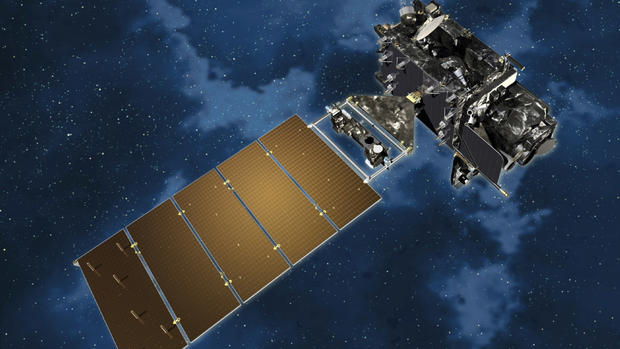GOES-R Weather Satellite Set To Launch
MINNEAPOLIS (WCCO) -- A new generation of weather satellite, called GOES-R, will lift off from Florida's Kennedy Space Center in just under 24 hours.
It has been in the works for almost 20 years and will ultimately replace the current group of GOES satellites, which use 1970s technology.
WCCO Director of Meteorology Mike Augustyniak traveled to the Kennedy Space Center to cover the launch, and he was there when the satellite rolled out onto the launch pad Friday afternoon.
He was able to get within about 500 feet of the rocket on the launch pad -- close enough to hear some of the sounds it was making.
The big move from the hangar, where the vehicle was put together, to Launch Pad 41 started around 10 a.m. Friday.
It took about 40 minutes for the rocket to travel the third of a mile between the two.
Four solid rocket boosters are already attached to the center core rocket, and liquid oxygen and hydrogen will be added as fuel for the center engine beginning a few hours before launch.
The satellite has a lot of new capability on board, including the Geostationary Lightning Mapper.
For the first time ever, we will be able to monitor lightning activity in real time across North America, and from the west coast of Africa to the east coast of New Zealand.
That information will be revolutionary for helping to keep the shipping and aviation industry safer, but it will also be a huge benefit to forecasters over land.
We know that when lightning activity increases within a developing storm, it will likely become severe quickly.
"If they're intensifying, we'll get perhaps up to five, six minutes over an average storm lead time to be able to warn. So we combine the radar information with the satellite imagery with the lightning data, and that overall depiction provides situational awareness for the forecaster," said Steve Goodman, senior program scientist for the GOES-R program. "These are storms that you need to pay close attention to."
GOES-R will also gather more types of data, and do it more frequently than our current weather satellites -- at a resolution that is four-times greater. That is the equivalent of going from an iPhone 3 camera to an iPhone 7 camera overnight.
"We combine the lighting and the satellite and the radar data all together, we'll be able to pinpoint more accurately not only the location, but also the timing of severe weather," Goodman said.
And, yes, observations from GOES-R will also help make our day-to-day forecasts more accurate.
"We're going to be able to derive atmospheric motion vectors, basically winds in the atmosphere, from those imagery," said Joe Pica, director of the National Weather Service's Office of Observations. "And then we are going to feed that into our numerical weather prediction models to make them more accurate."
If you want to watch the launch of GOES-R, we will be streaming it live on WCCO's Facebook page. Look for that beginning just before the scheduled launch time of 4:42 p.m. on Saturday
Mike Augustyniak will also be broadcasting live from Kennedy Space Center during WCCO Saturday Morning between 8 a.m. and 9 a.m.




